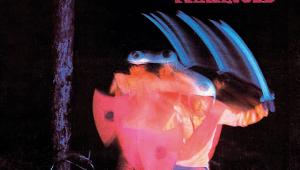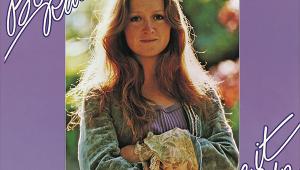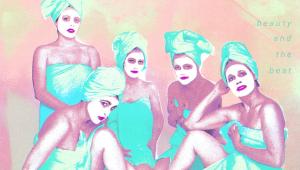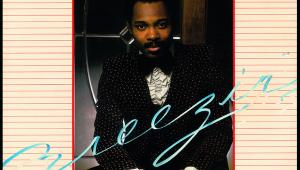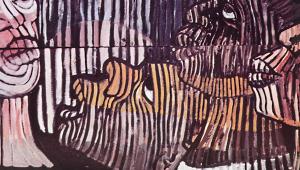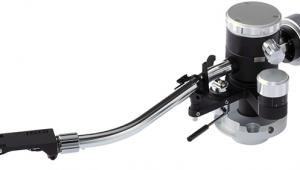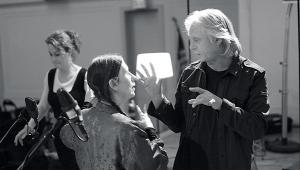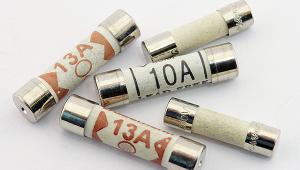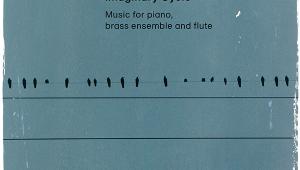Tubeway Army Replicas
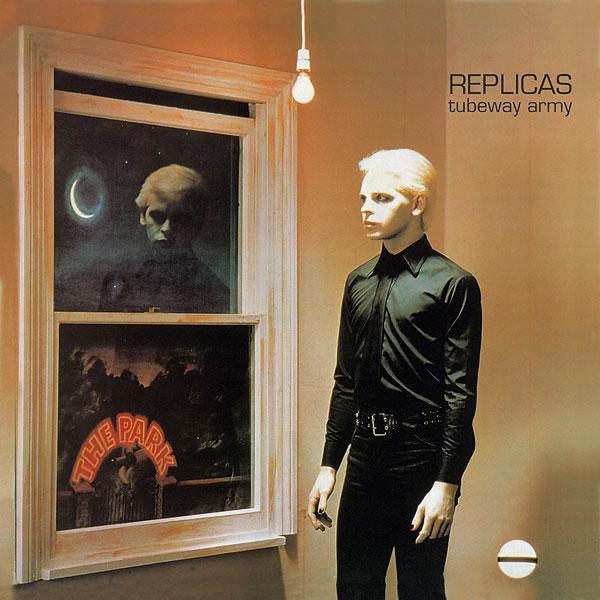
When punk arrived in the UK in late 1976 it had its radical aspects, including questioning the relationship between audience and artist, but it was essentially a form of back-to-basics rock ’n’ roll, albeit harder, faster and more aggressive than its predecessors.
At first this new wave of bands took a stance against things. They were anti-hippie, anti-monarchy, anti-progressive and stadium rock, anti-pretty much everything. Sex Pistols singer Johnny Rotten even claimed to be anti-sex and sang there was ‘no future’.
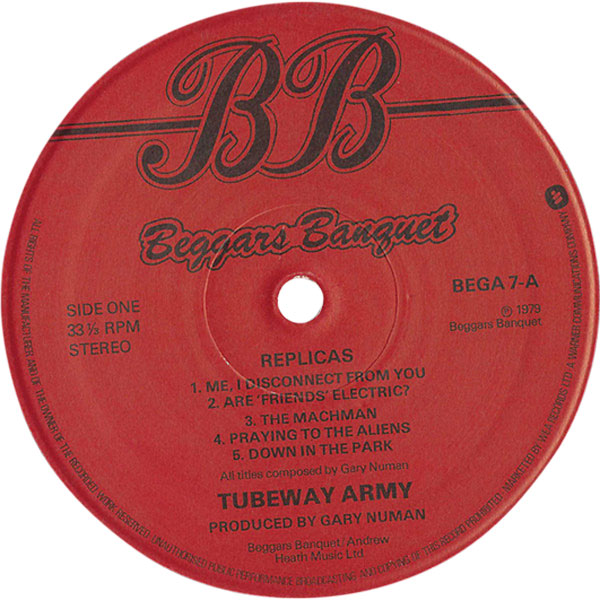
Label for side 1 of the original UK LP on Beggars Banquet
But another strand of musicians were already embracing the future, and two of the older figures in that particular vanguard were David Bowie and Brian Eno, both of whom were also considered to be ‘okay to like’ by the punk taste-police.
Vox Pops
After quitting Roxy Music in 1973, Eno’s early solo albums were brash, experimental, arch and arty, and his songwriting processes ignored the personal and subverted cliché. In autumn 1976 he and Steve Lillywhite co-produced the self-titled debut album by Ultravox, released in February 1977.
The cover presented them posing like a bunch of mannequins in leather and PVC, and their musical influences included Eno and Roxy Music, Krautrock and glam rock, mixed up with New Wave aggression. Ultravox were also an early example of the so-called Cold Wave. Vocalist John Foxx was heavily influenced by the transgressive writings of William S Burroughs and the sci-fi author J G Ballard, and in that album and Ha!-Ha!-Ha! (also 1977), his lyrics evoked visions of futuristic urban dystopias where dangerous liaisons took place in the shadows on desolate urban walkways, typified by ‘The Frozen Ones’ and ‘The Wild, The Beautiful And The Damned’.
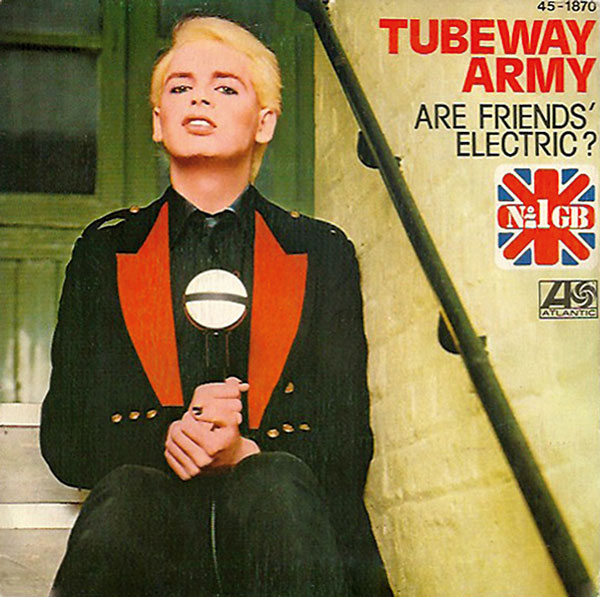
The singer on the sleeve of Tubeway Army’s first hit single ‘Are “Friends” Electric?’
Eno went straight from Ultravox to working on Bowie’s album Low, which was recorded in France and Berlin and released in January 1977. Low was a controversial conundrum. Bowie had left Los Angeles to decompress from the cocaine-fuelled lifestyle that was having serious impacts on his health, and appeared to have little to say – literally, as the album was largely instrumental. What lyrics there were purveyed a studied blankness, while the album’s cheesy, cheerless synths added to its bleak sound.
Charles Shaar Murray, writing in New Musical Express, hated Low: ‘It’s decadent in the sense that it glamourises and glorifies passive decay... it stinks of artfully counterfeited spiritual defeat’.
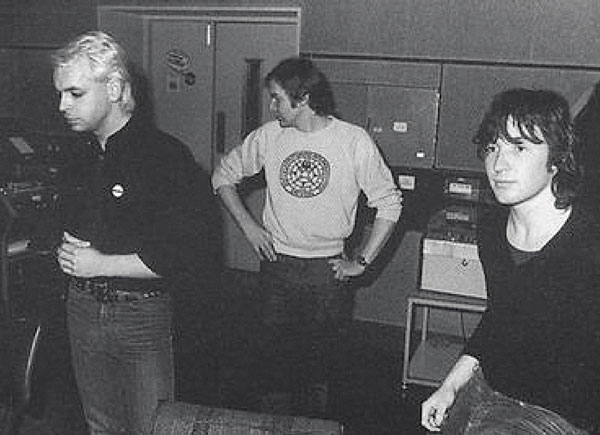
Gary Numan, Jess Lidyard and Paul Gardiner
On Low, Bowie was also influenced by German Krautrock groups, such as Kraftwerk, Neu!, La Dusseldorf and Tangerine Dream. In interviews Kraftwerk talked of music where machines were equivalent to, or even played, the musicians, ideas they explored most overtly on their 1978 album The Man-Machine. This seemed shockingly radical and antithetical to the direct, human communication of rock music in all its forms. But it was delivered with an element of mischievous humour that many did not get at the time. When Foxx sang of ‘Die Mensch-Machine’ on ‘I Want To Be A Machine’, he was far more serious.
Android Army
All the above were influences on Gary Numan, who in 1979 told New Musical Express writer Paul Morley: ‘I’ll never make music as good as Ultravox’. His first release of note was as lead vocalist and guitarist in New Wave trio Tubeway Army. For their self-titled album, released in 1978, the group comprised Numan, his best friend Paul Gardiner on bass and backing vocals, and Numan’s uncle Jess Lidyard on drums.
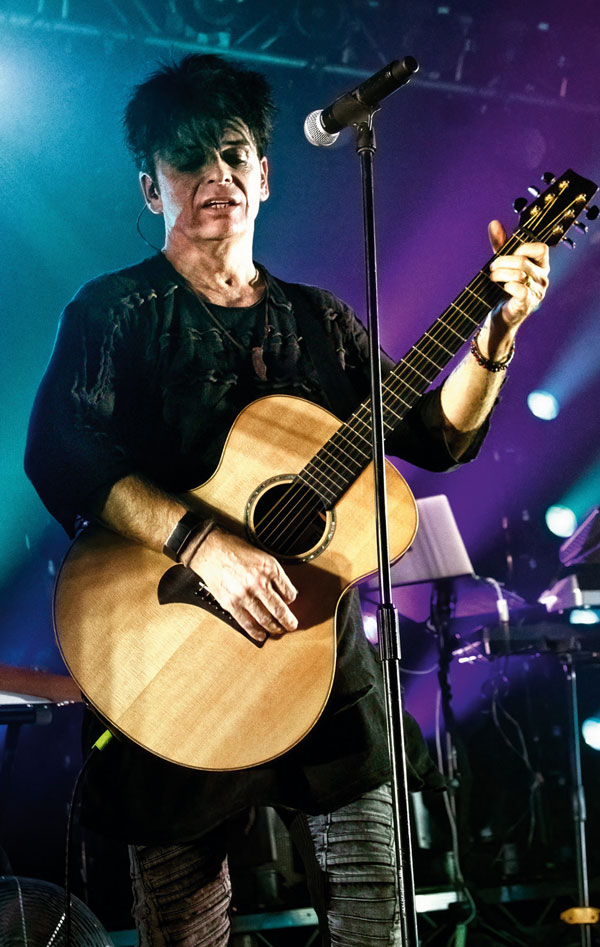
Playing live in 2019 at The Roundhouse in London
The album, released on the independent Beggar’s Banquet label, had a chilly, removed feel – there are references to androids on the track ‘Steel And You’ – and achieved limited commercial success. Yet the process of making it would stand Numan in good stead.
In The Moog
While recording the album at Spaceward Studios, Cambridge, he experienced an epiphany that would have a direct effect on his music. Looking back, he told The Quietus website in 2016: ‘I’d just been signed and I’d written all of these punk songs, but my heart wasn’t really in it’. In the studio control room he spotted a Minimoog Model D synthesiser. ‘I didn’t know how to set the Minimoog up, so I just pressed a key for whatever it was set on, and it made that famous low growl and the room vibrated’, he recounted.

Numan in a promo shot from 2011, the year he released the album Dead Son Rising
‘It was like an earthquake and I just loved it. And before the band was even finished setting up the gear I was in there working on changing the songs we’d arrived with into pseudo-electronic songs.’ The Tubeway Army front man was so charged up by this experience that he then wanted to go solo and become a ‘synthesiser star’, but was obliged to keep the group name by the record company.
This stylistic shift is audible on Tubeway Army, but it’s on the follow-up, 1979’s Replicas, where Numan really hit his stride. The album was preceded by a single ‘Down In The Park’, which was released in March 1979 and failed to chart, but two months later the single ‘Are “Friends” Electric?’ provided the breakthrough. This has a similar chord sequence to ‘Every Day I Die’ from the group’s debut, but the mood is very different, with monolithic synth lines looming over Numan’s pinched, adenoidal voice.
Sci-Fi Songs
It was a surprise No 1 despite being way too long at over five minutes and having an instrumental chorus. The ‘Friends’ of the title are androids and, in this case, sex companions; the album’s lyrics, indebted to Philip K Dick and (again) J G Ballard, are extracts from an incomplete sci-fi story Numan was writing about a futuristic London. ‘Replicas is filled with images of decay, seediness, drug addicts, fragile people and the abandonment of morals’, he wrote in his 1997 memoir Praying For The Aliens. ‘Down In The Park’ is particularly grim, its eerily beautiful keyboard lines a soundtrack to carnage, as humans scatter to escape the Mach-men and the machines playing ‘kill by numbers’.
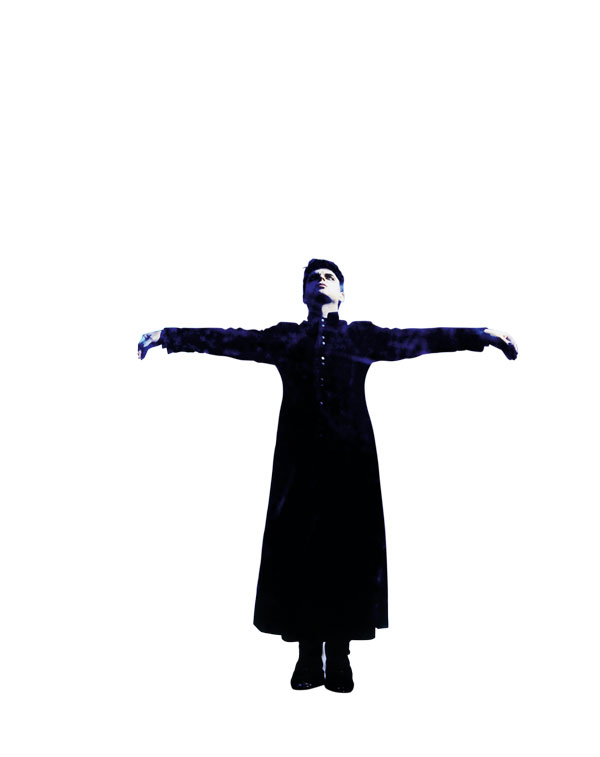
The singer in 2008 in a shot used to promote his Replicas tour
Numan The Human
Like Foxx, Numan also wanted to be a machine, so much so that he even tried, unsuccessfully, to establish the genre category of ‘Machine Rock’. But as well as its synthetic elements, Replicas features his guitar, including a bluesy solo on ‘It Must Have Been Years’, and real bass and drums from Gardiner and Lidyard. A drum machine ticks away on the closing instrumental, ‘I Nearly Married A Human’, which has sonic similarities to Bowie’s Low.
By this point Numan looked like a character from one of his songs, with high cheekbones, white make-up, bleached blonde barnet and a hint of kohl around his sad eyes, prompting the ironic nickname Numan The Human. All this ‘synths equal futuristic equals android’ shtick, prompted by his feelings of alienation as a 21-year-old, reached its peak on ‘Me! I Disconnect From You’, which came across like cryogenically preserved glam rock.
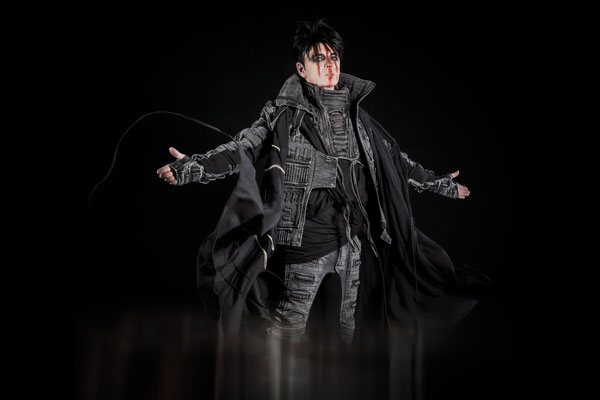
Numan pictured in 2020, the year he published his autobiography (R)evolution, and (below) performing live in Australia in 2009
His young audience’s own feelings of alienation, combined with Numan’s strong melodies, meant the album had considerable commercial appeal: in the UK, ‘Are “Friends” Electric?’ and Replicas sat at No 1 in the singles and album charts at the same time in July 1979. Tubeway Army’s debut album was soon reissued and went Top 20 in August 1979. Numan augmented the band for live shows, and was excited to recruit Ultravox keyboardist Billy Currie following that band’s split.
Over 40 years later, Numan continues to have a successful career as a solo artist, and has explored a number of genres. His electronic-based music has made the biggest mark, however, influencing musicians from pop to industrial to hip-hop, including Tears For Fears, Nine Inch Nails and Afrika Bambaataa.
New Friends
His music is much sampled and Sugababes reasserted the brilliance of ‘Are “Friends” Electric?’ by using it as the basis for ‘Freak Like Me’ in 2002. Numan liked it, telling Designer magazine: ‘I think the vocal is a lot more interesting than mine’. Their version also hit No 1...
